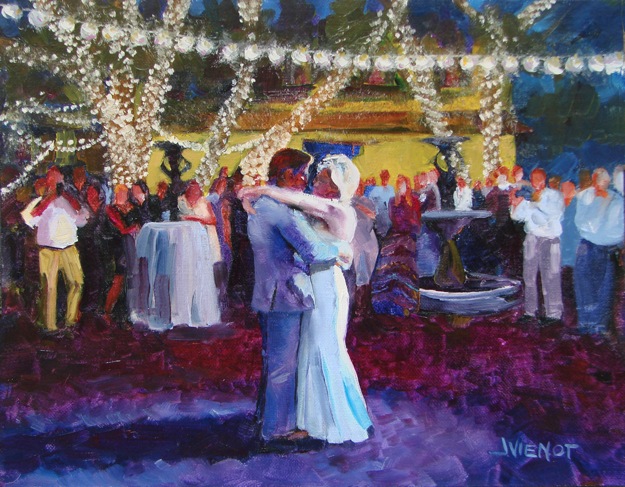 Because there are so many variables in n plein air painting, each painting presents a unique set of challenges, even if I am painting the same place at the same time of day. Adding a complication, I myself am different, and I am part of the process. “Wherever you go, there you are.” So I make no attempt to repaint the same scene in exactly the same way.
Because there are so many variables in n plein air painting, each painting presents a unique set of challenges, even if I am painting the same place at the same time of day. Adding a complication, I myself am different, and I am part of the process. “Wherever you go, there you are.” So I make no attempt to repaint the same scene in exactly the same way.
I read a blog about a concept called “growth mindset”. Apparently “researchers have known for some time that the brain is like a muscle; that the more you use it, the more it grows. They’ve found that neural connections form and deepen most when we make mistakes doing difficult tasks rather than repeatedly having success with easy ones.” (Salman Khan)
The point was that we learn and grow during the struggles. I certainly know this to be true within the patterns and rhythms of my life, and recently I have been coming to this conclusion about my approach to my art. Perhaps it is the stage of of growth as an artist, or perhaps it will always be this way, that I have to learn anew how to paint, during each painting. Of course, I become better at my craft, but each painting presents new compositional challenges, new color challenges, and often, new lighting or atmospheric challenges, not to mention of course, new imagery in new scenery. Usually, I paint something I have never painted before. During the process of the painting I must learn how to paint whatever it is that I am painting. I try to capture the light.
Last Saturday, my challenge was to paint the mist rising off the surface of a lake at sun-up. Many many years ago I remember creating a passable mist by scumbling white gauche on a watercolor painting, but I had no idea how to paint mist in oils. I ended up using a light gray mixture of paint where I wanted the mist, and feathering it as best as I could without mixing much into the colors above and below. This seems like a technique I should practice, since I probably will want to create this sort of atmosphere from time to time. Above right is my 5×7 plein air effort.
Below are paintings from the last two weeks — two from my best friend’s balcony looking out over Camp Creek Lake, and the other a painting of one of the gigantic live oaks at Eden Gardens State Park.
 |
 |
 |








